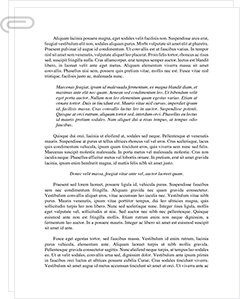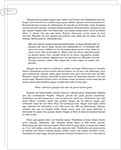 Study Document
Study Document
Walt Disney Control Mechanisms: Walt Term Paper
Pages:2 (587 words)
Sources:2
Subject:People
Topic:Walt Disney
Document Type:Term Paper
Document:#95154390
Since this control stems from the highest chain of command, a company's policies and procedures are usually directed by this authority (Droege, n.d.). Eisner took various actions in efforts to revive the company such as changing the organizational structure, hiring new management, controlling movie budgets and adopting a new company name.
Quality Controls:
This control mechanism not only depicts the extent of the suitable product but also influences the final product provided to customers. In Walt Disney Company, this control mechanism is evident in the company's decision to enter into film production after the failure of its initial cartoon business. The focus of the film production business is to maintain wholesome entertainment for the family.
Functions of these Control Mechanisms:
The major similarity between these four types of control mechanisms is that they have a significant effect on planning and organization of the company. These four control mechanisms are also used in the regulation of policies and procedures that help in the effective realization of the company's goals. However, while bureaucratic control affect the leading of the organization, budgetary, quality and marketing controls affect the company's productivity and profitability. While marketing control determines the organization's customer satisfaction, quality control determines the outcome of the product or services. On the other hand, budgetary control determines the company's expenses and market share while marketing determines the effectiveness of the company's products.
References:
Droege, S.B. (n.d.). Management Control. Retrieved October 19, 2010, from http://www.referenceforbusiness.com/management/Log-Mar/Management-Control.html
Housley, S. (2003). Case Analysis of the Walt Disney Company: The Magic of Disney. Retrieved from Haas School of Business -- University of California website: http://faculty.haas.berkeley.edu/meghan/299/Case_analysis_Disney4.pdf
Sample Source(s) Used
References:
Droege, S.B. (n.d.). Management Control. Retrieved October 19, 2010, from http://www.referenceforbusiness.com/management/Log-Mar/Management-Control.html
Housley, S. (2003). Case Analysis of the Walt Disney Company: The Magic of Disney. Retrieved from Haas School of Business -- University of California website: http://faculty.haas.berkeley.edu/meghan/299/Case_analysis_Disney4.pdf
Related Documents
 Study Document
Study Document
Walt Disney Company Organization's Culture Determines Communication...
Walt Disney Company Organization's culture determines communication Walt Disney's culture and communication can be described as two sides of the same coin. It is through structured mechanisms and processes that the organization exists. It is through documents, memos, meetings, and conversations that employees coordinate their activities. These communicative behaviors are collectively known as the discourse of the company. Therefore, it is primarily identified as the means by which Walt Disney creates a
 Study Document
Study Document
Segways: Compromise of Safety in Disney Theme Parks
Courtesy: huntingtonbeachsegway.com Segways: A compromise of safety in Disney Theme Parks The use Segways as personal mobility devices in theme parks, opposing argument Segway is an electronic transporter based on two-wheels. The device can carry one rider to travel in different terrains and allows the rider to balance on two wheels. The scooter uses network control mechanism, propulsion, sensors and mechanical assembly. The scooter has a stabilization technology, and the device uses software
 Study Document
Study Document
Symbolic Frame of Organizational Analysis Walt Disney Company
The Symbolic Frame
A novel approach to organizational behavior, Bolman & Deal’s (2013) model includes the structural, the human resources, the political, and the symbolic frames. The symbolic frame refers to the organization’s use of signs, symbols, and stories to create a brand identity and organizational culture, as well as justify its behaviors. Symbols create and propagate meaning, and encapsulate an organization’s written codes of ethics and values.
Therefore, symbols
 Study Document
Study Document
Corporate Universities"-Investigation of Their Development
In summary, we recommend that the IESBA reconsiders the proposals in the Exposure Draft and provides more guidance on safeguards applicable to sole practitioners and small accounting firms to ensure that the benefits of the changes outweigh the costs to SMEs. Under a principle-based approach, there should be safeguards and practical relief for all practitioners rather than rules-based outright prohibitions. The rewrite of this Independence component of the Code
 Study Document
Study Document
Leadership Management Literature Abounds With
Indeed, without these legitimacy criteria, a leader would not be able to influence followers to either change or progress towards organizational goals: "The acceptance of leadership from another person involves an implicit contract in which followers sacrifice some level of personal autonomy and pledge loyalty and effort to the leader.... The followers must be sure that the leader has the competency to lead effectively and the trustworthiness and loyalty
 Study Document
Study Document
HR Training and Development
Training and Development One of the most important functions of human resource management is training and development, which mainly focuses on organizational activity that is geared toward improving the performance of individuals and groups with the organization. The component is commonly known as organizational learning and development as well as human resource development. The significance of this component in human resource management is attributed to its direct link to organizational productivity.



